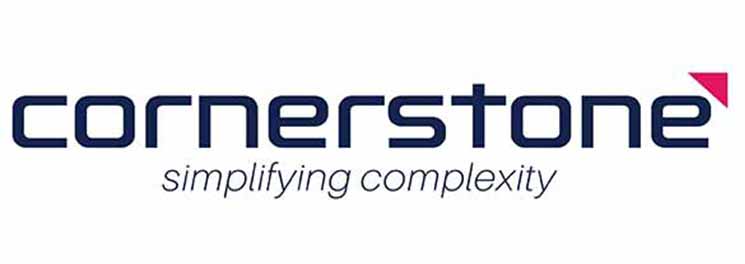
Smart Inventory, Stronger Cashflow: Managing Stock as a Strategic Cash Lever
Inventory optimisation gives businesses a critical lever for preserving cash and building resilience when it’s designed with smarter planning, tighter stock control, and strong cross-functional alignment.
Inventory decisions are central to how businesses manage liquidity. As cash becomes the critical measure of operational health, supply chain teams have a renewed role to play – not just in maintaining service levels, but in shaping working capital outcomes. That means moving beyond volume-based thinking and focusing instead on precision: where to hold stock, how much to invest and when to move.
In a market where every purchase ties up valuable capital, the strongest performers are shifting from static policies to dynamic inventory models.
Rather than simply responding to demand, these businesses are treating inventory as a valuable asset by adjusting their approach as conditions shift and making more deliberate choices about how stock is positioned and funded across the network. This approach creates space to move – strengthening agility, improving service confidence and releasing cash back into the business.
Managing inventory with liquidity in mind calls for a structural shift in how supply chain teams plan, monitor and adjust stock. The businesses doing this well are proactively building the capability to make timely, deliberate decisions that support both service and cash.
At the core of this shift are four foundational practices that bring consistency to inventory management, even when market conditions remain unpredictable.
Pillar 1: Plan with precision
Inventory planning plays a direct role in cash performance. The goal isn’t to forecast perfectly, but to invest intentionally; based on what’s needed and where, and how customer demand is changing.
That means moving away from blanket safety stock rules or assumptions that no longer hold. When planning decisions are grounded in real data and adjusted regularly, supply chain teams can respond with greater accuracy and avoid tying up capital unnecessarily.
The businesses doing this well are focused less on covering every possibility and more on shaping policy to reflect what’s actually happening.
For those unsure where to start, a structured inventory health check can provide a quick snapshot of where stock is out of step with business priorities and help uncover quick wins.
Pillar 2: Control with clarity
Good inventory decisions rely on timely insight. When visibility drops, stock tends to drift; either building up unnoticed or running down where it’s needed most.
Control in this context means knowing where attention is needed and acting early. Stock that is building up, slowing down or falling short should trigger focused, useful signals – clear enough to prompt a decision, not just add to the noise.
With stronger oversight, supply chain leaders can course-correct before problems compound. That might mean rebalancing stock across locations, refining replenishment volumes, or adjusting review cycles. The aim is to stay responsive without overcorrecting, and to keep inventory aligned with both service expectations and cash priorities.
Pillar 3: Streamline the portfolio
Not every product deserves a place on the shelf. Over time, portfolios grow crowded with items that deliver little value but still tie up cash and space.
Simplifying the range doesn’t mean compromising service. It’s about focusing inventory investment on the products that matter – those that drive performance or play a critical role in customer relationships. When low-performing or inactive items stay in the mix, they make planning harder and dilute working capital.
Streamlining starts with understanding how each product contributes to the business. That might mean delisting SKUs that no longer earn their keep, or managing niche items differently to avoid overstocking. With a leaner, more purposeful portfolio, inventory becomes easier to manage and cash is less likely to get tied up in the wrong places.
Pillar 4: Collaborate to respond
Supply chain performance improves when planning becomes a shared effort. The most effective organisations bring suppliers, customers and internal teams into the conversation early – well before stock decisions are locked in.
That level of coordination creates better timing, fewer surprises and stronger alignment across the internal and external network of partners. It also helps reduce the need for buffers by improving confidence in what’s coming. When partners share signals and expectations, decisions about inventory become faster and more accurate.
Collaboration doesn’t need to be supported by complex systems; often it’s about creating the right cadence of shared planning sessions, which helps to align responses and develop agreed responses to known or anticipated triggers. The more connected the supply chain, the easier it becomes to manage cash without compromising service.
Inventory as a strategic discipline
Inventory has long been managed in service of availability and efficiency. In today’s environment, it plays an equally important role in preserving cash. The organisations handling it well are strengthening planning discipline, improving internal alignment and creating the visibility needed to respond with confidence as conditions evolve.
Inventory plays a dual role in a resilient business. It provides cover when conditions shift and creates flexibility when opportunity appears. To contribute meaningfully to resilience and cashflow, inventory needs to be managed as an active capability – one that evolves with the business, reflects current conditions and supports timely decision-making.
For many organisations, this is the clearest place to begin. Understanding where stock no longer aligns with demand, or where working capital is under pressure, builds the momentum to act. It brings inventory into line with broader goals and strengthens its role in financial decision-making.
We are enablers of change and transformation in Supply Chain, Information Management, Financial Planning & Analytics, Management Consulting, Project Management, and Managed Application Services. Contact us to find out more about how we work with your teams or call 1300 841 048.





